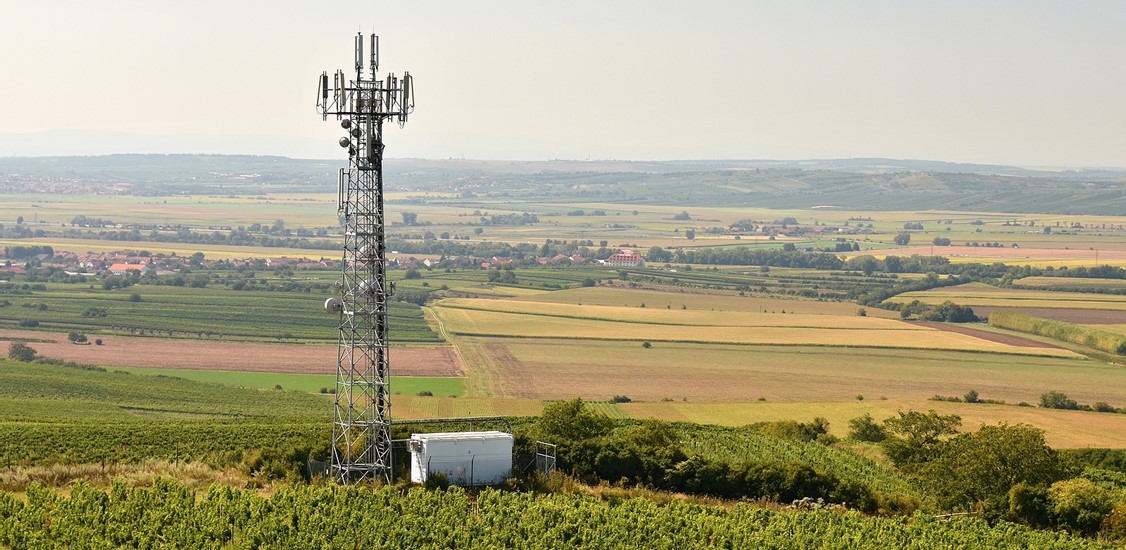As we look toward 2022, a convergence of influencing factors is driving the rapid advancement of technology innovation. In 2020, digital transformation engagements advanced at an accelerated pace to enable the survival of many companies and for the global population to work, learn, and live. Consequently, COVID-19 spotlighted the long-standing fact that billions of people across the globe have no internet access much less own devices or can connect. The need for better global connectivity alone, coupled with other challenges in connectivity and telecommunications, are factors that drive the work of the IEEE Standards Association (IEEE SA) in this industry.
As we forge forward in 2022, there are several noteworthy trends to highlight:
#1: Bringing Internet Connectivity to All
More than 40 percent of the world's population, most of whom live in rural areas, have no access to affordable or reliable internet connectivity. In developed countries, the internet penetration rate is 87 percent, but it’s only 47 percent in developing countries and 19 percent in the least developed countries, according to a 2019 report by the International Telecommunications Union. While the pandemic further drives demand for internet connectivity due to critical use cases such as digital education, remote working, telehealth, and social connectivity, rural areas of countries continue to be left out or very limited in coverage. Telecom operators do not hold rural communities as a viable business case for investment. Thus, asteledensity in urban areas continues to rise, the digital gap between rural and urban areas widens - a gap IEEE SA would like to bridge.
In the United States, nearly 30 million residents cannot fully benefit from the digital age. According to a Pew Research Center survey in 2021, about seven out of ten rural Americans (72 percent) say they have broadband internet at home, a 9 percentage point rise in home broadband adoption since 2016,. Ninety-seven percent of urban Americans have access to a high-speed, fixed service, but only 65 percent of rural residents have this access, according to the Federal Communications Commission. In tribal lands, only 60 percent of residents have access.
The advancement of global connectivity in rural areas is unpredictable. However, we can see one dynamic in the United States that we expect to influence an increase in rural connectivity: the migration of both young and retiring Boomer adults who are moving from urban to rural areas. These groups expect to have the connectivity to which they are accustomed, most especially the ability to work remotely. Our observations from this population shift trend can perhaps translate to help our global community.
The Connectivity & Telecom Practice at IEEE SA is working to advance the goal of global digital inclusion through several initiatives. The Rural Communications Industry Connections Activity, for example, is intended to contribute toward the goal of global digital inclusion by developing solutions for rural and remote areas using suitable technologies. Additionally, an Industry Connections (IC) program, User-Centered Approach to Designing a User Interface for Rural Communities, researches technology needs of global rural communities, which will help to develop a model for the design and implementation of user interfaces for rural communities.
#2: Advancing Artificial Intelligence and Machine Learning with 5G and Future Networks
We expect to see the rapid acceleration of Artificial intelligence (AI) and machine learning (ML) technologies and solutions, which are essential to automation efforts. In every sector, enterprises and organizations seek solutions to optimize operations and service. These technologies provide benefits in areas such as predictive maintenance, automated customer service, and fighting cyber fraud. In the telecom sector, AI and ML solutions are helping to accelerate the deployment of 5G networks, such as the ability to more quickly identify where and how to position network assets such as cell towers.
However, AI and ML require enormous data collection from telecom applications, connected systems, and diverse devices. Every year, data creation and consumption dramatically increases, which requires telecom companies to adopt more efficient means to leverage data to expand automation and AI/ML offerings while also mitigating cyber security threats. Rapidly increasing amounts of data must be quickly and securely channeled to software engineers, site reliability engineers, security pros, business analysts, data scientists and partners. Thus, we can perhaps see the greatest challenge and where it is believed we will see intense focus so that solutions can be deployed and be secure.
Today’s communication architectures are typically designed in a bottom-up approach; therefore, the applications must fit in the underlying physical layer (PHY). This fragmented landscape is difficult for the introduction of newer components and applications. A Transdisciplinary Framework for 5G, Future Networks Applications, and Services, for example, is an IEEE SA Industry Connections (IC) activity formed to develop a transdisciplinary framework that incorporates cross-domain services and applications into one flexible, scalable, and sustainable ecosystem.
#3: Enabling Open RAN (Radio Access Network) through Open Source
The landscape of technology development is changing due, in part, to open source, which is speeding innovation, and enabling radical advancements in the way we live, work, and communicate. Open source also impacts standards development, bringing opportunities for new and dynamic collaborations that can further advance and improve technology. Looking forward, open source will continue to drive the innovation of solutions. We also see a stronger imperative for the rapid advancement and deployment of 5G networks, particularly in rural areas, which will result in a more focused effort to advance open source initiatives.
As an example, IEEE SA recently launched a new, important initiative - the IEEE SA Open-RAN Industry Connections (IC) Program, to help move forward swift, positive advances in wireless technologies including 5G and beyond. This program focuses on 5G standardization, industry engagement, education, publications, testbed, and roadmap activities. IEEE SA invites you to join us in this new effort around Open RAN.
Despite its promise, much work remains to be done to understand and close the technical gaps which stand in the way of the development and deployment of O-RAN technology. IEEE SA is working to help identify gaps and collaborate internally with our other working groups to solve issues and uncover more opportunities.
Get engaged with IEEE SA
Looking toward 2022, we can expect to see continued advancement of efforts and technology evolutions leading towards our efforts to bring and improve upon connectivity to everyone, everywhere. IEEE SA offers a full ecosystem designed to work across industries and sectors through an inclusive, neutral platform to drive worldwide participation and champion the benefits of open standards and solutions, accelerating their adoption and the advancement of technology. We welcome participants from academia, government, and industry such as telecommunications and network service providers, original equipment manufacturers (OEMs), start-ups, technology providers, as well as stakeholders from other industry sectors.






















